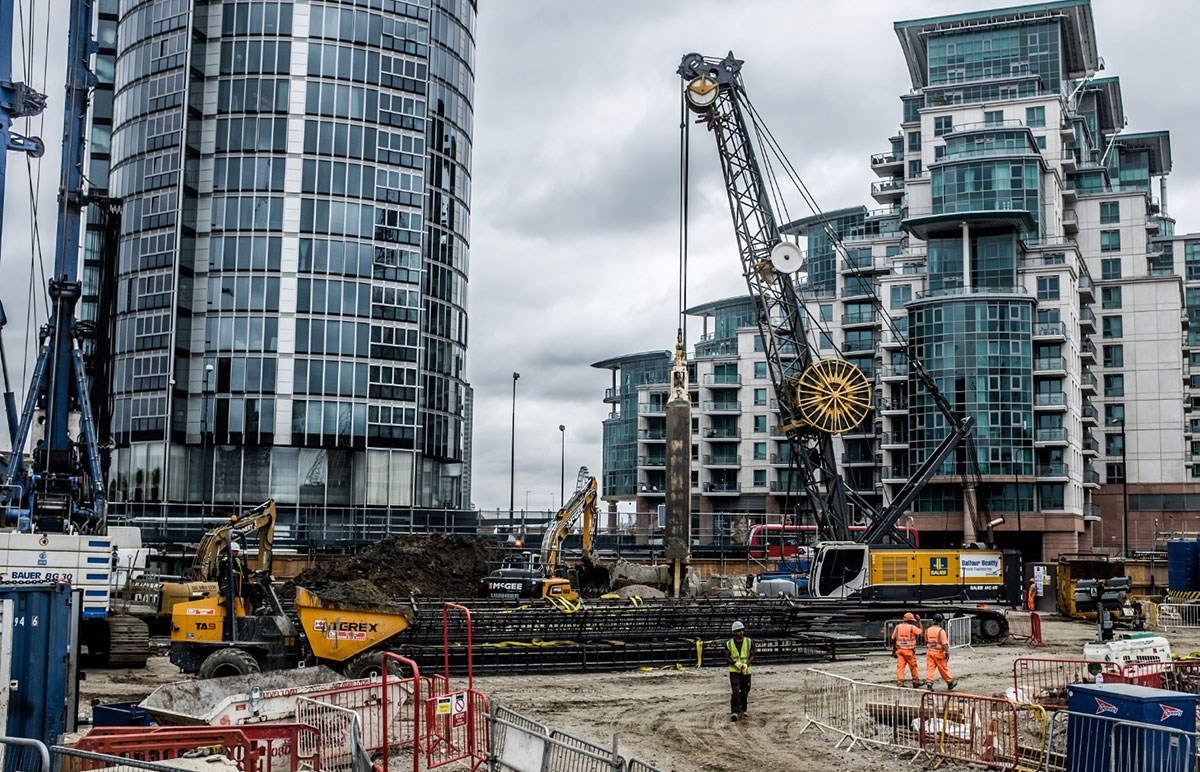The 6-Minute Rule for Geotheta
The 6-Minute Rule for Geotheta
Blog Article
Excitement About Geotheta
Table of ContentsThe smart Trick of Geotheta That Nobody is DiscussingThe smart Trick of Geotheta That Nobody is Talking AboutNot known Factual Statements About Geotheta Our Geotheta DiariesNot known Details About Geotheta

They carry out site examinations, collect samples, do research laboratory examinations, and analyze data to assess the suitability of the ground for building and construction jobs - Tailings Engineer. Based upon their searchings for, geotechnical engineers supply suggestions for structure layout, slope stability, maintaining structures, and mitigation of geotechnical dangers. They team up with various other professionals, such as architects, structural engineers, and building and construction teams, to make certain that geotechnical considerations are integrated right into the general job style and implementation
By analyzing the habits and homes of dirt and rock, they can determine prospective geotechnical dangers such as landslides, soil settlement, or incline instability. Their knowledge assists stop failures or crashes that could threaten lives and residential property. Below are some thorough tasks and obligations of a geotechnical designer: Website Examination: Geotechnical engineers conduct site examinations to collect data on subsurface conditions.
They translate the information to recognize the properties and actions of the dirt and rock, including their toughness, permeability, compaction attributes, and groundwater conditions. Geotechnical Analysis and Design: Geotechnical designers examine the data gathered during site investigations to analyze the security and viability of the website for building and construction jobs. They perform geotechnical estimations and modeling to assess factors such as birthing ability, settlement, slope security, side planet stress, and groundwater flow.
The smart Trick of Geotheta That Nobody is Discussing
Foundation Style: Geotechnical designers play a critical role in developing foundations that can securely sustain the designated framework. They evaluate the dirt conditions and tons requirements to establish the proper foundation type, such as superficial foundations (e.g., footings), deep foundations (e.g (https://hub.docker.com/u/geotheta)., stacks), or specialized methods like soil renovation. They consider variables such as settlement limits, birthing capability, and soil-structure communication to create ideal foundation styles
They evaluate construction strategies, monitor site activities, and perform field examinations to verify that the style recommendations are complied with. If unpredicted geotechnical concerns emerge, they examine the situation and give recommendations for removal or changes to the style. Threat Analysis and Mitigation: Geotechnical engineers examine geotechnical risks and dangers related to the project website, such as landslides, liquefaction, or soil erosion.

Collaboration and Communication: Geotechnical designers work click here to read carefully with other specialists entailed in a task, such as designers, architectural engineers, and construction teams. Efficient interaction and cooperation are important to integrate geotechnical factors to consider right into the general job style and construction procedure. Geotechnical designers provide technical experience, response questions, and ensure that geotechnical needs are satisfied.
How Geotheta can Save You Time, Stress, and Money.
Below are some kinds of geotechnical designers: Structure Engineer: Foundation engineers concentrate on developing and evaluating structures for frameworks. They evaluate the dirt conditions, load demands, and site qualities to figure out the most proper structure type and style, such as shallow structures, deep foundations, or specialized methods like heap foundations.
They review the elements affecting incline stability, such as dirt buildings, groundwater conditions, and slope geometry, and develop methods to stop incline failures and reduce risks. Earthquake Designer: Earthquake designers specialize in assessing and designing structures to endure seismic pressures. They analyze the seismic hazard of a site, evaluate dirt liquefaction possibility, and develop seismic layout criteria to guarantee the safety and resilience of structures during earthquakes.
They carry out field screening, accumulate examples, and evaluate the collected data to identify the dirt residential properties, geologic developments, and groundwater problems at a website. Geotechnical Instrumentation Engineer: Geotechnical instrumentation designers concentrate on monitoring and measuring the behavior of soil, rock, and frameworks. They install and maintain instrumentation systems that monitor variables such as soil negotiation, groundwater degrees, slope movements, and architectural displacements to analyze efficiency and supply very early cautions of prospective concerns.
The 7-Minute Rule for Geotheta
They perform tests such as triaxial examinations, loan consolidation tests, straight shear tests, and leaks in the structure tests to collect information for geotechnical evaluation and layout. Geosynthetics Designer: Geosynthetics engineers concentrate on the design and application of geosynthetic materials, such as geotextiles, geogrids, and geomembranes. They make use of these materials to boost soil stability, enhance slopes, give water drainage services, and control disintegration.
They tend to be investigatory individuals, which suggests they're intellectual, introspective, and investigative. They are interested, methodical, logical, analytical, and rational. Some of them are likewise social, meaning they're kind, generous, cooperative, individual, caring, useful, understanding, sensible, and pleasant - Geotechnical Engineers.
In the office atmosphere, geotechnical engineers utilize specialized software tools to execute calculations, create layouts, and analyze information. They prepare reports, evaluation project specs, connect with clients and staff member, and coordinate project activities. The workplace setting offers a favorable environment for research, evaluation, and partnership with various other professionals associated with the job.
The 8-Minute Rule for Geotheta
They frequently check out job websites to carry out website examinations, analyze geotechnical problems, and collect data for evaluation. These sees involve traveling to various places, occasionally in remote or challenging surfaces. Geotechnical designers may do soil sampling, conduct examinations, and display construction activities to make certain that the geotechnical aspects of the task are being executed appropriately.
Geotechnical designers likewise function in specialized geotechnical laboratories. Geotechnical lab designers function extensively in these settings, handling screening equipment, operating tools, and videotaping information.
Report this page